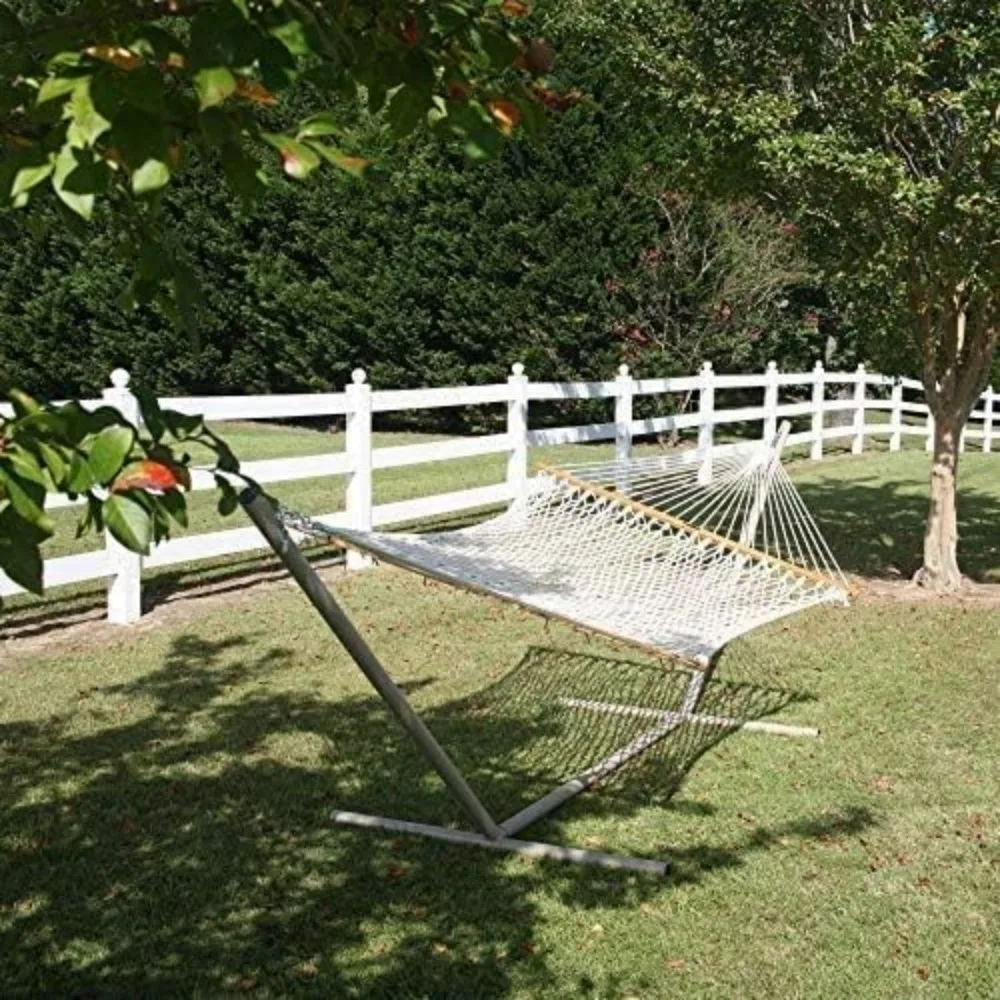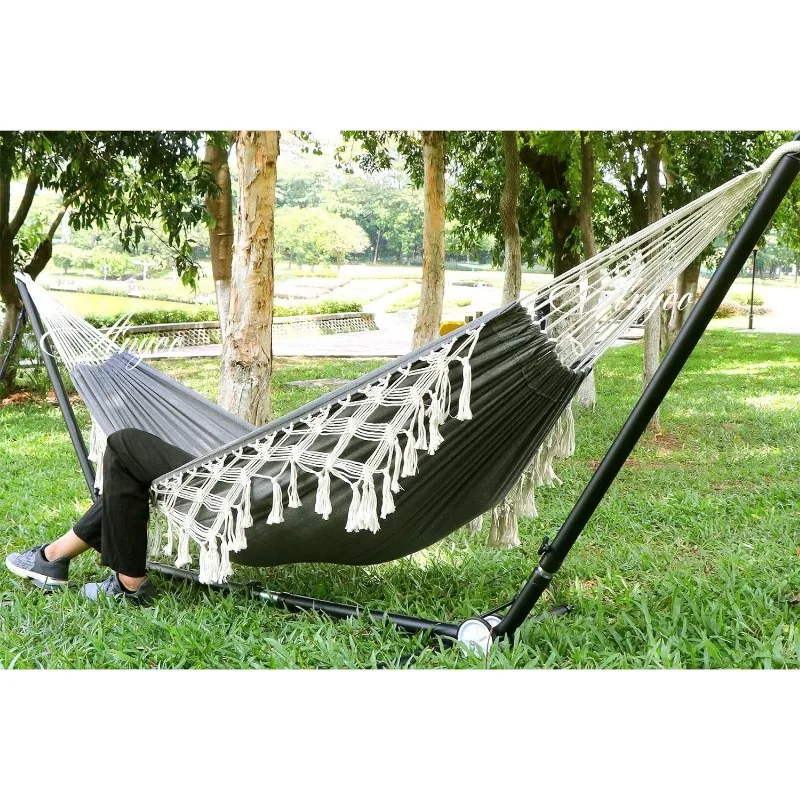Hammocks represent relaxation, tranquility, and a touch of adventure in our fast-paced world. Whether you’re setting one up in your backyard, at a campsite, or on a balcony, knowing how to do it safely and securely is essential for optimal comfort and longevity. This beginner’s guide will walk you through each step, ensuring that your hammock experience remains joyous and hassle-free.
Understanding Different Types of Hammocks
Before diving into the setup process, it’s crucial to understand the various types of hammocks available. The most common types are rope hammocks, fabric hammocks, and camping hammocks. Rope hammocks are typically made from cotton or polyester and are well-suited for warm climates. Fabric hammocks, made from materials like polyester, cotton, or canvas, provide a solid surface and are often considered more comfortable than their rope counterparts. Camping hammocks are lightweight, portable, and usually made from high-strength nylon for durability. Knowing the type of hammock you have will significantly influence how you approach its setup.

Selecting the Ideal Location
Choosing the perfect spot for your hammock is paramount as it impacts both safety and comfort. For backyard installations, look for healthy, sturdy trees. The trees should be at least 12 to 15 feet apart, with trunks around a foot in diameter. If trees are unavailable, consider installing posts or using a hammock stand. For camping, select a location with trees that are sufficiently spaced and free from dead limbs or branches that could fall. Ensure the ground beneath your hammock is free from sharp objects, rocks, or other potential hazards.
Gathering the Necessary Tools and Equipment
Having the right tools and equipment will streamline the setup process and ensure stability. Essential items include strong tree straps or ropes, a level, a tape measure, and possibly carabiners for adjustable hanging. Tree straps, preferably made from polyester or nylon, are gentle on trees and prevent damage. If your hammock doesn’t come with its own ropes or straps, ensure that the ones you purchase are rated to hold at least 300 pounds to provide a secure and safe setup. For a more permanent setup, bolts and heavy-duty hooks may be necessary.
Ensuring Proper Tree Health and Strength
When using trees to hang your hammock, assessing their health and strength is crucial to guarantee safety. Look for signs of vitality – green leaves, a strong trunk, and no signs of disease or decay. Trees should be at least 6 inches in diameter. Avoid using younger or thinner trees, as they might bend or break under the weight. It’s also a good practice to check for potential hazards above, such as dead branches, to mitigate any risk of falling debris while you’re lying in your hammock.
Measuring and Marking
Accurate measurements are key to a successful hammock setup. Measure the distance between your anchor points to ensure they fit the length of your hammock. Generally, you’d want the hammock to hang with a sag, resembling a smiley face, with the lowest point about 18 inches off the ground. Using a tape measure, mark the points on the trees where the straps will be secured. It’s crucial to account for the extra stretch that might occur once the hammock is loaded with weight.
Attaching the Straps or Ropes
Proper attachment of straps or ropes ensures both security and tree health. Wrap the tree straps around the tree at approximately head height (5-6 feet). If the straps have multiple loops, choose the loop that allows your hammock to hang with the appropriate sag and height. In the absence of straps, use strong, non-stretch ropes to achieve a hitch or knot that won’t slip. Common knots include the bowline knot or the taut-line hitch, both of which provide strong, adjustable holds.

Hanging the Hammock
Now that your straps or ropes are securely in place, it’s time to hang the hammock. Attach the ends of the hammock to the straps or ropes using carabiners or hooks. Ensure that the attachment points are secure and capable of bearing weight. If using carabiners, make sure they are locked, and if using S-hooks, ensure they are properly positioned and closed. Test the hammock by lightly pressing down on it before climbing in.
Achieving the Perfect Sag and Tension
The comfort of a hammock lies largely in its sag and tension. The ideal hang for a hammock has a deep sag, roughly 30 degrees off horizontal. This allows for a more natural body position, reducing pressure points and providing greater relaxation. To achieve this, adjust your straps or ropes accordingly. A hammock hung too tightly can be uncomfortable, whereas too much slack may cause you to bottom out. Use your body weight to test and fine-tune the tension until you achieve a comfortable hang.
Testing the Setup
Before jumping into your hammock, it’s wise to test its security. Gradually apply pressure to the hammock, checking for any signs of slipping, loosening, or discomfort. Sit down gently at first, then lie back to distribute your weight evenly. Make sure the height is still appropriate and that the hammock feels stable. This step prevents potential mishaps, ensuring your hammock remains a safe place to relax.
Maintenance and Safety Tips
Maintaining your hammock setup requires vigilance and care. Periodically check the anchor points, straps, and hammock fabric for signs of wear and tear. UV rays, moisture, and repeated use can degrade materials over time. Store your hammock in a dry, shaded area when not in use to prolong its lifespan. Additionally, always ensure that children use hammocks under supervision and never exceed the recommended weight limit. Following these maintenance practices will preserve both safety and comfort.
Adding Accessories for Enhanced Comfort
To enhance your hammock experience, consider adding various accessories. Underquilts and top quilts can provide warmth during cooler weather, while rain tarps offer protection against the elements. Hammock pillows can increase comfort, and bug nets are essential for outdoor enthusiasts in insect-prone areas. Exploring these accessories can transform your hammock into an all-season retreat, making it more versatile and enjoyable.
Exploring Permanent Installation Options
For those who plan to use their hammock frequently, a permanent installation might be worth considering. Installing posts or poles in concrete ensures a stable, durable setup. This is particularly beneficial in areas without suitable trees. When setting posts, ensure they are buried deep enough (at least three feet) and securely anchored with concrete. Permanent fixtures like eye bolts can also be used for attaching your hammock to walls or sturdy structures, providing a long-lasting solution.
Addressing Common Challenges
Even with the perfect setup, you may encounter some challenges. Uneven ground, high winds, or persistent pests can affect your hammock experience. Addressing these issues involves strategic placement, such as choosing a sheltered spot to block wind or using additional tie-downs to secure your hammock. Portable bug screens or sprays can handle insect invasions. Remember, the key to a pleasant hammock experience lies in preparedness and adaptability.
Environmentally Conscious Hammocking
Enjoying nature through hammocking also comes with the responsibility of minimizing your ecological footprint. Use tree-friendly straps to prevent bark damage, and avoid areas where your activity could cause erosion or other environmental harm. Leave no trace principles, such as packing out all trash and avoiding damage to local flora, ensure that natural spots remain pristine for future hammockers. Engaging in environmentally conscious practices sustains the beauty and health of nature for all to enjoy.

Troubleshooting and Fine-Tuning
Encountering issues such as discomfort, instability, or uneven sag is common but manageable. Troubleshoot by revisiting each setup step, ensuring all components are correctly installed. Sometimes, small adjustments, such as repositioning straps or retying knots, can significantly improve the setup. Additionally, consult the manufacturer’s guidelines and community forums for specific advice related to your hammock model. Fine-tuning your setup can transform a frustrating experience into a blissful retreat.
Conclusion
Hanging a hammock might seem daunting at first, but with the right knowledge and equipment, it becomes a straightforward and rewarding task. From understanding different hammock types to mastering the fine art of achieving the perfect sag, this comprehensive guide empowers you with the tools and techniques to ensure a safe and secure setup. Embrace the joy of hammocking by following these steps, and unlock endless opportunities to relax, unwind, and connect with the beauty of the outdoors.
